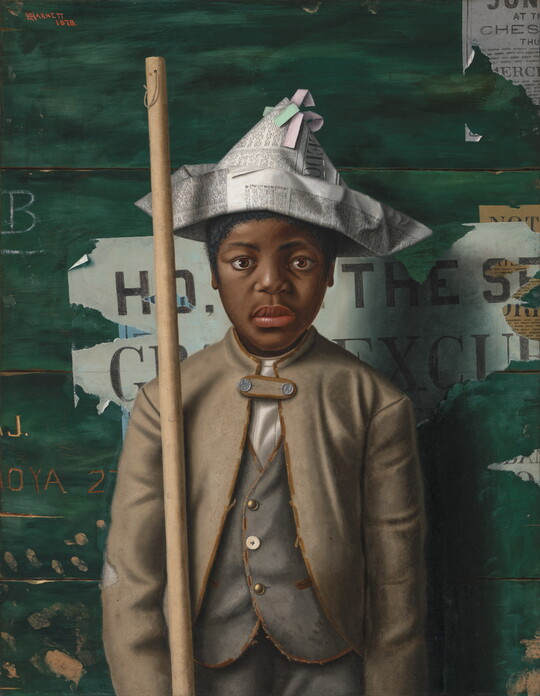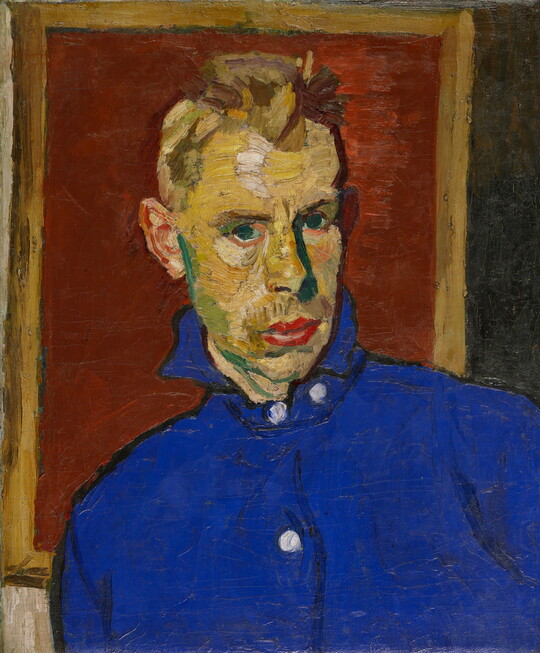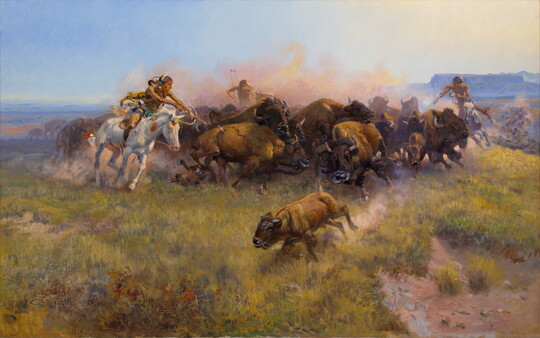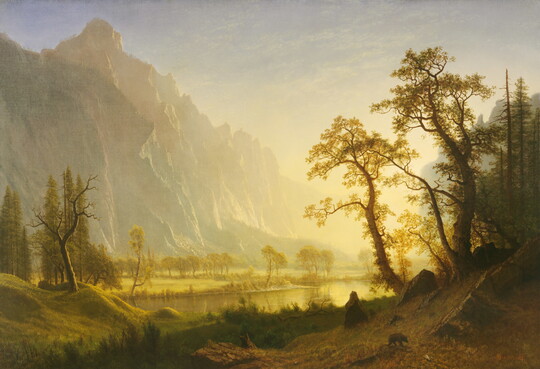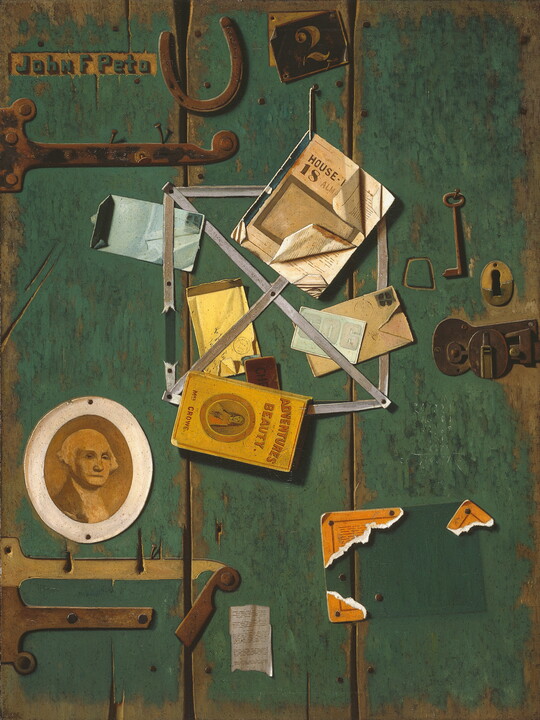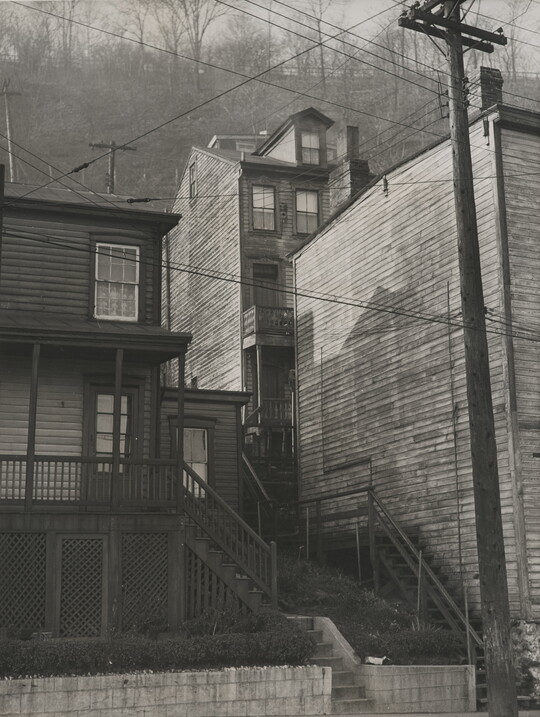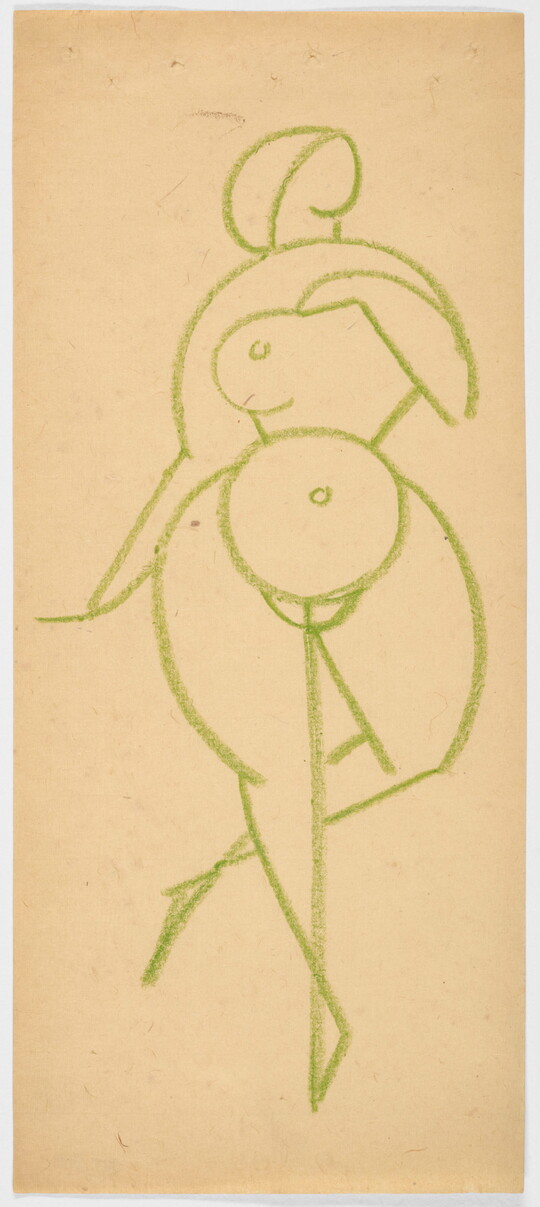


Artwork Images
Photo:
Controls
The Fall of the Cowboy
Object Details
-
Date
1895
-
Object Type
Paintings
-
Medium
Oil on canvas
-
Dimensions
25 x 35 1/8 in.
-
Inscriptions
Recto:
signed l.r.: Frederic Remington
-
Collection Name
Amon G. Carter Collection
-
Credit Line
Amon Carter Museum of American Art, Fort Worth, Texas, Amon G. Carter Collection
-
Accession Number
1961.230
-
Copyright
Public domain
Object Description
In 1895, acclaimed western writer Owen Wister wrote “The Evolution of the Cow-Puncher” for Harper’s Monthly. The essay lamented the end of the open range and was accompanied by several illustrations of Remington’s paintings, including this portrayal of two cowboys tending to the gate of a barbed wire fence—a ranching technology that rendered much of cowboy life obsolete following its introduction in the 1870s.
To convey this passing of an age, Remington stripped away unnecessary detail, distilling the scene down to its poetic essence. His choice of palette creates a somber mood; the work is composed entirely of muted tones, from the overcast sky to the leathery complexions of the men themselves. Remington also experimented with his choice of subject: Infrared imaging reveals that he began with a depiction of a locomotive and what appears to be a cattle train before painting over it with this quieter, more atmospheric scene.
—Text taken from the Carter Handbook (2023)
-
Remington and RussellFebruary 25–May 24, 2015
This exhibition of paintings and sculptures selected from the Carter’s extensive collection offers visitors an opportunity to gain insight into the works of Frederic Remington and Charles M. Russell, two of the greatest practitioners of the art of the American West.
-
From Remington to O’Keeffe: The Carter’s Greatest HitsOctober 6, 2018–March 22, 2019
During the renovation, this exhibition features highlights from the permanent collection, including paintings, photographs, and sculptures, by some of America’s most renowned artists.
-
Mythmakers: The Art of Winslow Homer and Frederic RemingtonDecember 22, 2020–February 28, 2021
American icon Winslow Homer, famous ocean painter, joins Frederic Remington, legendary cowboy artist, for the first exhibition to explore the unexpected resonances and moments of convergence between the themes, artistic sensibilities, and technical processes of these two artists.
Additional details
Location: On view
Part of:
Amon G. Carter Collection
See more by Frederic Remington
Tags
Audio:

Visual Description: The Fall of the Cowboy
-
In the late 1800s, Frederic Remington traveled regularly to the American West and depicted scenes he observed in that part of the country. The Fall of the Cowboy is one such painting.
Beneath a sky of gunmetal-gray tones, two cowboys have stopped their horses in a snowy landscape along a barbed wire and wood-post fence. On the left, a White man with a mustache has dismounted from his saddled horse, who waits on the far right, to remove the rails of the gate so the pair can pass through. He is wearing a tan, floppy-brimmed hat, a dark-gray coat, light-gray gloves, and brown chaps with fringe; his back is mostly turned to the viewer as he looks at the gate. To the right of the gate, another White cowboy sits atop his chestnut horse, holding the reins in his left, gray-gloved hand and watching the other cowboy by the fence. This man is wearing similar clothing as the standing cowboy—a tan-brimmed hat, a brown coat, and brown pants. Footprints in the snow lead from the side of the gray horse where the man unlatching the fence stands. All the figures in the painting are facing the left side of the work.
The artist signed his name in the bottom right corner of the artwork.
-
How might artists portray mood or emotion in their work?
What can artists reveal about a culture or society, and what might be missing from the narratives they depict?
Can artworks be reliable sources of historical information? Why or why not?
How does an artwork enrich and influence the telling of history?
How are artists affected by the places and times in which they live?
How do time and context change the way we think about historical events?
-
What do you see? Describe the people, animals, and the landscape.
How might these men be feeling? What has happened? How can you tell?
What has the artist done to create a particular mood or feeling?
By 1895, the “open range” was closed. How does Remington show us that?
By 1895, many factors had changed the life and the job of cowboying, particularly the introduction of barbed wire fences. What does this painting tell us about Remington’s feelings about those changes?
What do you think might be next for these cowboys?
Think about the time period. What factors in history have happened to result in the loss of this way of life? What jobs today are becoming obsolete? What factors are causing this?
-
Grades 4–8
Imagine what it would be like to work with these two men. Write a short paragraph about the experience you might have if you were working alongside them. What job would you do? Why?
Share Educator Resources
Amon Carter Disclaimer
This information is published from the Carter's collection database. Updates and additions based on research and imaging activities are ongoing. The images, titles, and inscriptions are products of their time and are presented here as documentation, not as a reflection of the Carter’s values. If you have corrections or additional information about this object please email us to help us improve our records.
Every effort has been made to accurately determine the rights status of works and their images. Please email us if you have further information on the rights status of a work contrary or in addition to the information in our records.
Related Works
-
Attention, Company!, 1878
William M. Harnett
Oil on canvas
1970.230
-
Self-Portrait, 1919
Stuart Davis
Oil on canvas
1975.29
-
The Buffalo Hunt [No. 39], 1919
Charles M. Russell
Oil on canvas
1961.146
-
Sunrise, Yosemite Valley, ca. 1870
Albert Bierstadt
Oil on canvas
1966.1
-
A Closet Door, 1904-1906
John Frederick Peto
Oil on canvas
1983.158
-
Untitled, 1970
Luchita Hurtado
Lithograph
1970.86
-
Ranchos Church, New Mexico, 1930-1931
Georgia O'Keeffe
Oil on canvas
1971.16
-
Untitled (Pittsburgh Housing), 1930s
Manuel de Aumente
Gelatin silver print
P2009.11
-
Green Nude, ca. 1920
Gaston Lachaise
Crayon on paper
2018.4




